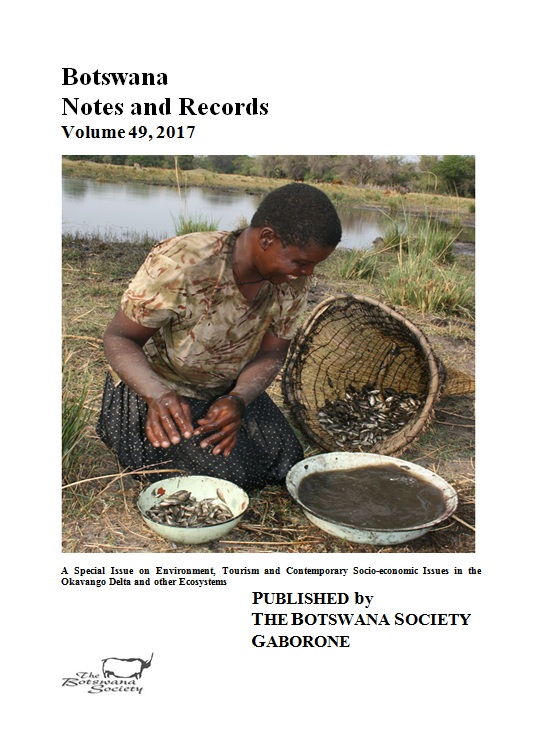Water Balance and Variations of Nutrients and Major Solutes along a River Transect Through the Okavango Delta, Botswana
Main Article Content
Abstract
Wetland goods and services provide a means of survival for many riparian rural communities in developing countries, particularly in the Sub-Saharan Africa. To sustain the provision of goods and services for human use, spatial and temporal variations in the quantity and quality of water in a given wetland should be adequately understood and managed. In this study we monitored the quantity and quality of surface water through the Okavango Delta for 2 years, from June 2008 to June 2010. Specifically we monitored precipitation over the Delta and surface inflow and outflow (via the Okavango and Thamalakane Rivers respectively) for water quantity, nutrients, cation and anion levels in the surface water along a river transect from Mohembo through the Delta to Lake Ngami. The study revealed that the water balance during the study period was similar to earlier reports. Most of the water inflow was via the Okavango River while surface outflow via the Boro River accounted for about 2% of total inflow. Calcium (Ca) and bicarbonate (HCO3-) were the most dominant cation and anion respectively across the river transect sampled except in Lake Ngami where sodium (Na) was the dominant cation. Total nitrogen (0.222±0.018 to 0.698±0.035 mg L-1) and total phosphorus (0.042±0.005 to 0.131±0.024 mg L-1) levels across the Delta were generally low. The N:P ratios suggest spatial and temporal P and N growth limitations in the Delta. N limitation seems to be ameliorated by biological nitrogen fixation. Since nutrient poor aquatic systems tend to be very sensitive to pollution, excessive P input into the Delta should be avoided to prevent eutrophication.
Article Details
Section
SECTION ONE: ARTICLES
